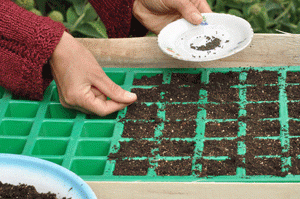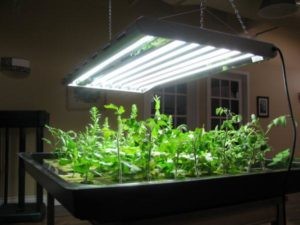Starting Seeds Indoors
 How to Start Seed for the Best Production
How to Start Seed for the Best Production
The Home Garden Seed Association has these tips on how to start seed for the best production in your garden this coming growing season.
1. Use quality seed. Old seed won’t perform as well as fresh seed. Ask yourself these questions: Were the seeds stored incorrectly with regard to temperature and moisture protection? Are the seeds more than two years old? Do you know the origin of the seeds? Old seed won’t grow as well as fresh seed. Make sure you’re starting with the best possible seeds for the most productive garden.
 2. Maximize light. Adequate light is necessary for strong seedling growth whether it’s supplied by natural light or grow lights. (Check out this link for a bit of mythbusting about grow lights.)
2. Maximize light. Adequate light is necessary for strong seedling growth whether it’s supplied by natural light or grow lights. (Check out this link for a bit of mythbusting about grow lights.)
Myth or truth: Grow lights are necessary to start seeds indoors? Adequate lighting is key whether it’s natural light or artificial.
3. Start seed at the right time. Starting seed too early can result in weak and spindly plants. Determine seed start dates by using information on seed packets which usually indicate timing based on last frost dates.
Best Seeds to Start Indoors
The Home Garden Seed Association recommends these plants to start indoors:
Edibles: Broccoli, Brussels Sprout, Cabbage, Cauliflower, Eggplant, Onions, Peppers, Tomatoes, and various herbs
Where to Place Indoor Seedlings
A south- or west-facing window will provide adequate light, assuming you wait until the longer days of April to begin planting. A sun porch might work if you pay attention to the fluctuation of temperatures and add some warmth on frosty nights. If you’re starting seed in a cool indoor area consider a heat mat under the seedling tray to achieve optimum temperature to assist with germination. Remember to remove the heat mat once seedlings have sprouted.